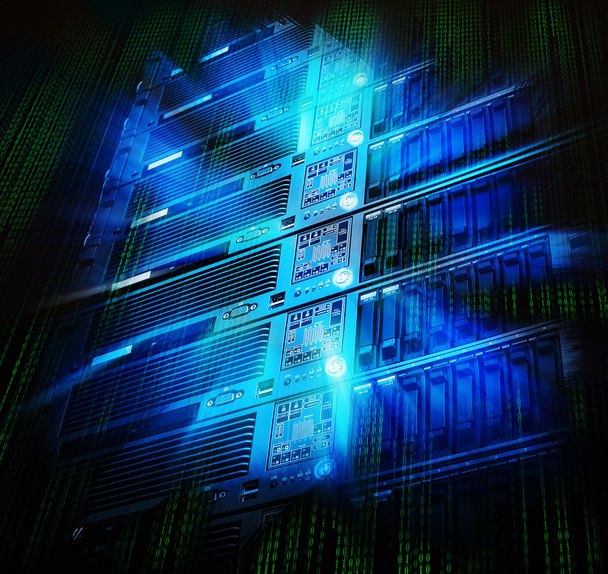 HPE made a big announcement this week on the data storage front, introducing Unified DataOps. At a high level, I am a big supporter of innovation along the lines of what HPE is doing—namely, providing technologies that fuel the transition from buying systems to realizing positive business outcomes. That’s because more and more, I see business leaders trying to achieve two seemingly conflicting goals:
HPE made a big announcement this week on the data storage front, introducing Unified DataOps. At a high level, I am a big supporter of innovation along the lines of what HPE is doing—namely, providing technologies that fuel the transition from buying systems to realizing positive business outcomes. That’s because more and more, I see business leaders trying to achieve two seemingly conflicting goals:
Infrastructure, Cloud & DevOps
-
-
 This week, IBM announced several enhancements to its storage portfolio. While there was a lot of good stuff in there, IBM’s new Spectrum Fusion offering deserves a deeper conversation. My colleague Paul Nashawaty covered some of the value it offers in his blog. I wanted to take a step back, however, and look at IBM Spectrum Fusion as it relates to the overall direction of IT storage and Infrastructure.
This week, IBM announced several enhancements to its storage portfolio. While there was a lot of good stuff in there, IBM’s new Spectrum Fusion offering deserves a deeper conversation. My colleague Paul Nashawaty covered some of the value it offers in his blog. I wanted to take a step back, however, and look at IBM Spectrum Fusion as it relates to the overall direction of IT storage and Infrastructure. -
 When digital initiatives evolve in the data center, so too should your ability to choose how you consume IT resources. The desire to move to the cloud has some IT leaders intrigued, yet they continue to look into ways to maximize their existing IT investment and bridge the gap to get to the cloud. This has many IT leaders not moving to the cloud just yet but preferring to buy infrastructure via a consumption-based model such as a monthly subscription based on resource utilization for their on-premises data center.
When digital initiatives evolve in the data center, so too should your ability to choose how you consume IT resources. The desire to move to the cloud has some IT leaders intrigued, yet they continue to look into ways to maximize their existing IT investment and bridge the gap to get to the cloud. This has many IT leaders not moving to the cloud just yet but preferring to buy infrastructure via a consumption-based model such as a monthly subscription based on resource utilization for their on-premises data center. -
 IBM’s Eric Herzog, Chief Evangelist and Vice President of Worldwide Storage Channels, briefed us at ESG on the recent IBM Storage announcement launch focused on modernization infrastructure for the edge, core, and hybrid cloud. This post will cover key elements in this launch where IBM’s focus is on Spectrum Fusion HCI and the importance of edge, core, and hybrid cloud as well as simplifying Red Hat OpenShift and Kubernetes. (more…)
IBM’s Eric Herzog, Chief Evangelist and Vice President of Worldwide Storage Channels, briefed us at ESG on the recent IBM Storage announcement launch focused on modernization infrastructure for the edge, core, and hybrid cloud. This post will cover key elements in this launch where IBM’s focus is on Spectrum Fusion HCI and the importance of edge, core, and hybrid cloud as well as simplifying Red Hat OpenShift and Kubernetes. (more…) -
 The way we interact with content is changing; however, the systems that contain the data are also evolving. Historically, the approach to connecting with businesses was through a website and web pages, often from a laptop. Now, the interaction is much more dynamic. But interaction with web content is only part of the story. Businesses connecting with their customers often require multiple ways of engagement. This can be through a web page, but also through mobile, tablets, watches, and other IoT devices such as beacons. Obviously, the shift of data distribution has evolved and the delivery of content also needs to evolve. (more…)
The way we interact with content is changing; however, the systems that contain the data are also evolving. Historically, the approach to connecting with businesses was through a website and web pages, often from a laptop. Now, the interaction is much more dynamic. But interaction with web content is only part of the story. Businesses connecting with their customers often require multiple ways of engagement. This can be through a web page, but also through mobile, tablets, watches, and other IoT devices such as beacons. Obviously, the shift of data distribution has evolved and the delivery of content also needs to evolve. (more…) -
While public cloud momentum has been building for more than a decade, there is still a sizeable footprint of on-premises applications and workloads. Presented with this opportunity, many IT leaders are looking for ways to modernize their own data centers by making them more cloud-like. What technologies will be the likeliest targets for investment as organizations look to accelerate this conversion process in the coming 12 months and beyond?
-
 When is a midrange storage array not a midrange storage array? When it can break down the traditional definitions of storage arrays. Given the state of modern IT, it is time to do away with labels such as entry-level or midrange for storage technology. That is an antiquated way of classifying technologies. And the Dell Technologies PowerStore is an excellent case in point. At first glance, someone might think of the PowerStore as just another midrange array, but that would be a huge mistake.
When is a midrange storage array not a midrange storage array? When it can break down the traditional definitions of storage arrays. Given the state of modern IT, it is time to do away with labels such as entry-level or midrange for storage technology. That is an antiquated way of classifying technologies. And the Dell Technologies PowerStore is an excellent case in point. At first glance, someone might think of the PowerStore as just another midrange array, but that would be a huge mistake. -
Join me and Scott Sinclair as we speak in this latest 3-minute video about the impact of digital transformation on IT infrastructure, hyperconverged infrastructure (HCI), and the state of artificial intelligence.
-
 In March 2021, Lenovo announced new offerings that provide new ways for clients to accelerate computing with their Lenovo TruScale Services, which enables flexible consumption of server resources. The purpose of this launch was to accelerate real-time insights from the edge to the cloud; incorporate eighteen new ThinkSystem and ThinkAgile systems in the portfolio by expanding AMD’s family of third generation EPYC microprocessors, including eight new ThinkSystem V2 servers updated with third generation Intel Xeon scalable processors; and deliver ready-to-deploy analytics and AI offerings with SAS edge analytics, city security AI with Addfor, and scalable machine learning with cnvrg.io.
In March 2021, Lenovo announced new offerings that provide new ways for clients to accelerate computing with their Lenovo TruScale Services, which enables flexible consumption of server resources. The purpose of this launch was to accelerate real-time insights from the edge to the cloud; incorporate eighteen new ThinkSystem and ThinkAgile systems in the portfolio by expanding AMD’s family of third generation EPYC microprocessors, including eight new ThinkSystem V2 servers updated with third generation Intel Xeon scalable processors; and deliver ready-to-deploy analytics and AI offerings with SAS edge analytics, city security AI with Addfor, and scalable machine learning with cnvrg.io. -
 In a recent briefing with George Crump, Chief Marketing Officer of StorONE, we learned about Seagate and StorONE’s latest offering that is designed to provide affordable high-performance and high-capacity storage solutions. The offering from StorONE, which became available in early March 2021 and features Seagate’s drives, was created specifically with a focus on databases, virtualization video surveillance, file, backup, and archive capability.
In a recent briefing with George Crump, Chief Marketing Officer of StorONE, we learned about Seagate and StorONE’s latest offering that is designed to provide affordable high-performance and high-capacity storage solutions. The offering from StorONE, which became available in early March 2021 and features Seagate’s drives, was created specifically with a focus on databases, virtualization video surveillance, file, backup, and archive capability. -
The Influx of Digital Efforts
2020 was a challenging year for people and business alike. As we look to 2021 and the future, businesses have shifted and ramped up the focus on digital transformation initiatives. These initiatives are emerging from the need for a remote workforce and increased digital marketing and sales efforts, fueled in part by an influx in budget from reduced travel. This more digital mindset means more customers are looking online to experience everything from shopping to virtual travel to social events and more—and companies are scrambling to accelerate their digital transformation efforts to meet the need.
The responses from ESG’s 2021 Technology Spending Intentions Survey clearly show that budgets are being reallocated to support these digital initiatives. The data shows that 65% of organizations that have mature digital transformation initiatives will increase IT spending for 2021, with 60% of initiatives in early stages and 56% in planning only stages. This is compared to 27% of respondents with no digital transformation initiatives on their roadmap.
Overall, the data shows the year-over-year percentage increase in digital transformation initiatives for 2021 IT budget over 2020 as follows:
- Mature projects: 4.33% increase
- Early stage projects: 3.2% increase
- Planning projects: 2.05% increase year
Note that the percentages may seem negligible, but when considering the typical enterprise IT budget, it is significant.
The data also indicates that 59% of mature organizations are looking to move on-premises workloads to the public cloud in 2021 in an effort to support these initiatives. This is largely due to the increase in focus to adopt digital tools to optimize collaboration, increase operational efficiencies, and provide differentiated ways to connect with customers.
Driving Toward Results
In my brief on Public Cloud and Digital Initiatives for 2021, I analyzed the data from the Technology Spending survey and came away with a few essential takeaways.
- Nearly 75% of organizations report either having mature digital transformation initiatives or that they are currently implementing and executing various digital transformation initiatives.
- Business project teams may start by deploying in public clouds (or by adopting containers), then may seek the option to deploy across hybrid or multi-cloud environments.
The past six months have caused cloud users to push the accelerator even more. The maturity of these organizations also may be considered. Adding serverless and containers as part of the strategy is also a consideration in conjunction to co-exist in a heterogeneous environment with the public cloud.
The Proof Is in the Data
There is no mistake in the momentum of public cloud adoption. Digital transformation initiatives reap the benefits of the cloud, but they also need to leverage the existing business infrastructure. This is why application and infrastructure modernization is so critical to the success of future-focused businesses.
As you can see in the following chart, organizations are focused on driving operational efficiencies. But it’s important to also note that 25% of these businesses are developing entirely new business models. This paradigm shift will require a new way of interacting with existing, heritage systems such as databases, ERP, and other workloads. To bridge the gap, businesses will need to adapt with not only new resource skills to accommodate these new models, but also find new ways to interact with their customers through modernized front-end applications.

Next Steps for Businesses
Organizations will need to ask when and if the larger strategy drives digital initiatives to the public cloud. Business approaches, as well as the success, can vary based on the execution of the project, including: The go-to-market and routes-to-market, the impact to the existing business model and transition to the next, the ability of your internal resources to execute the new strategy, etc. These approaches should be considered prior to executing and pivoting the business into a new direction.
The bottom line is you need to continue to sell your products and services to the marketplace – but the traditional methodology of doing so is no longer a viable option. As your customer is forced to digitally transform, so are you. You can either embrace the new paradigm of digital marketing-based selling versus old school methods, or you will find that your competition will. Customers are not going to go back to relying on trade shows – they have already spoken loudly and clearly – sell to me the way I want to be sold to or get out of the way.
Clearly, business evolution is inevitable. Adopting current trends and new business models is a way to strengthen the way you connect with your customer base. For example, having the ability to deliver your offering in the cloud is expected from most clients and customers. This allows businesses to shift costs from a large initial investment to an operational investment based on how clients want to consume your offering.
Cloud does not necessarily mean you can stand up an offering on a new infrastructure. It also may define how your offering is built or modernized to take advantage of the new resources. For example, being cloud-resident is not often good enough. The offering should have the ability to leverage a modern, elastic infrastructure. Scale up, scale down, and scale out as appropriate.
Cloud-ready applications are moving up in cloud maturity but having a cloud-native ability allows the offering to take full advantage of the resources and infrastructure. Also, this ability makes the offering competitive and cost-effective by using fewer resources like serverless or containers for microservices.
Here are top key points from the respondents to the ESG’s 2021 Technology Spending Intentions survey:
- Public cloud infrastructure (including serverless) adoption has almost doubled in five years.
- Nearly half of organizations now have a cloud-first strategy.
- Nearly 8 in 10 remaining on-premises workloads will move to cloud candidates over the next five years.
These points support the importance of fully understanding the public cloud adoption for new digital initiatives.
In fact, business are sending far less people to shows or in-person meetings due to the pandemic but we find that this trend will continue and in-person events will become less popular. Business will rely on other sources of education and digital initiatives are driving towards these efforts.
The ESG’s 2021 Technology Spending Intentions survey indicates that the top two ways to gain customer confidence are product reviews and product evaluations.
- Product reviews: 45% of respondents find these most valuable
- Product evaluation/performance testing: 42% of respondents find these most valuable
Based on the survey data, this type of content is critical for potential buyers to learn about, research, and evaluate IT products and services. Providing this type of information this way will get the most traction for educating audiences.
Interested in learning more? Download my brief, Public Cloud and Digital Transformation Initiatives for 2021, to read more on this topic.
-
As the COVID-19 pandemic continues to be a challenge, businesses have shifted and ramped up focus on digital transformation initiatives. As such, the cloud promises greater operational efficiencies, collaboration, and customer experiences to accelerate this effort. This brief outlines how digital transformation initiatives continue to gain momentum with companies pursuing more aggressive public cloud spending and strategies.

 This week,
This week,  When digital initiatives evolve in the data center, so too should your ability to choose how you consume IT resources. The desire to move to the cloud has some IT leaders intrigued, yet they continue to look into ways to maximize their existing IT investment and bridge the gap to get to the cloud. This has many IT leaders not moving to the cloud just yet but preferring to buy infrastructure via a consumption-based model such as a monthly subscription based on resource utilization for their on-premises data center.
When digital initiatives evolve in the data center, so too should your ability to choose how you consume IT resources. The desire to move to the cloud has some IT leaders intrigued, yet they continue to look into ways to maximize their existing IT investment and bridge the gap to get to the cloud. This has many IT leaders not moving to the cloud just yet but preferring to buy infrastructure via a consumption-based model such as a monthly subscription based on resource utilization for their on-premises data center. IBM’s
IBM’s  The way we interact with content is changing; however, the systems that contain the data are also evolving. Historically, the approach to connecting with businesses was through a website and web pages, often from a laptop. Now, the interaction is much more dynamic. But interaction with web content is only part of the story. Businesses connecting with their customers often require multiple ways of engagement. This can be through a web page, but also through mobile, tablets, watches, and other IoT devices such as beacons. Obviously, the shift of data distribution has evolved and the delivery of content also needs to evolve.
The way we interact with content is changing; however, the systems that contain the data are also evolving. Historically, the approach to connecting with businesses was through a website and web pages, often from a laptop. Now, the interaction is much more dynamic. But interaction with web content is only part of the story. Businesses connecting with their customers often require multiple ways of engagement. This can be through a web page, but also through mobile, tablets, watches, and other IoT devices such as beacons. Obviously, the shift of data distribution has evolved and the delivery of content also needs to evolve.  When is a midrange storage array not a midrange storage array? When it can break down the traditional definitions of storage arrays. Given the state of modern IT, it is time to do away with labels such as entry-level or midrange for storage technology. That is an antiquated way of classifying technologies. And the Dell Technologies PowerStore is an excellent case in point. At first glance, someone might think of the PowerStore as just another midrange array, but that would be a huge mistake.
When is a midrange storage array not a midrange storage array? When it can break down the traditional definitions of storage arrays. Given the state of modern IT, it is time to do away with labels such as entry-level or midrange for storage technology. That is an antiquated way of classifying technologies. And the Dell Technologies PowerStore is an excellent case in point. At first glance, someone might think of the PowerStore as just another midrange array, but that would be a huge mistake. In March 2021, Lenovo announced new offerings that provide new ways for clients to accelerate computing with their Lenovo TruScale Services, which enables flexible consumption of server resources. The purpose of this launch was to accelerate real-time insights from the edge to the cloud; incorporate eighteen new ThinkSystem and ThinkAgile systems in the portfolio by expanding AMD’s family of third generation EPYC microprocessors, including eight new ThinkSystem V2 servers updated with third generation Intel Xeon scalable processors; and deliver ready-to-deploy analytics and AI offerings with SAS edge analytics, city security AI with Addfor, and scalable machine learning with cnvrg.io.
In March 2021, Lenovo announced new offerings that provide new ways for clients to accelerate computing with their Lenovo TruScale Services, which enables flexible consumption of server resources. The purpose of this launch was to accelerate real-time insights from the edge to the cloud; incorporate eighteen new ThinkSystem and ThinkAgile systems in the portfolio by expanding AMD’s family of third generation EPYC microprocessors, including eight new ThinkSystem V2 servers updated with third generation Intel Xeon scalable processors; and deliver ready-to-deploy analytics and AI offerings with SAS edge analytics, city security AI with Addfor, and scalable machine learning with cnvrg.io. In a recent briefing with George Crump, Chief Marketing Officer of StorONE, we learned about Seagate and StorONE’s latest offering that is designed to provide affordable high-performance and high-capacity storage solutions. The offering from StorONE, which became available in early March 2021 and features Seagate’s drives, was created specifically with a focus on databases, virtualization video surveillance, file, backup, and archive capability.
In a recent briefing with George Crump, Chief Marketing Officer of StorONE, we learned about Seagate and StorONE’s latest offering that is designed to provide affordable high-performance and high-capacity storage solutions. The offering from StorONE, which became available in early March 2021 and features Seagate’s drives, was created specifically with a focus on databases, virtualization video surveillance, file, backup, and archive capability.